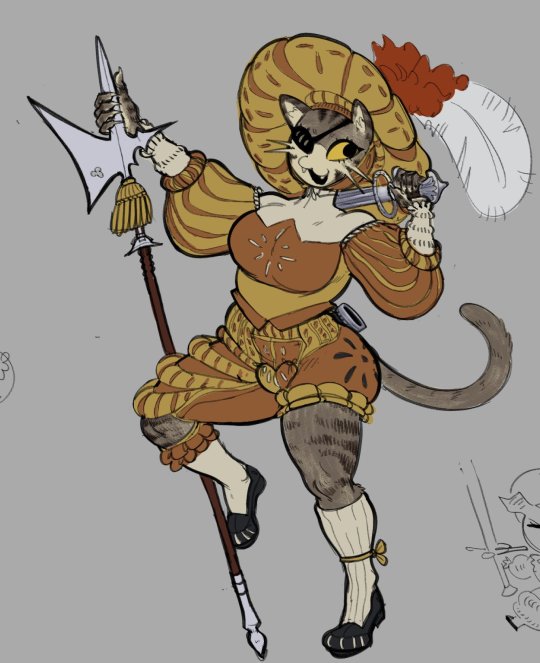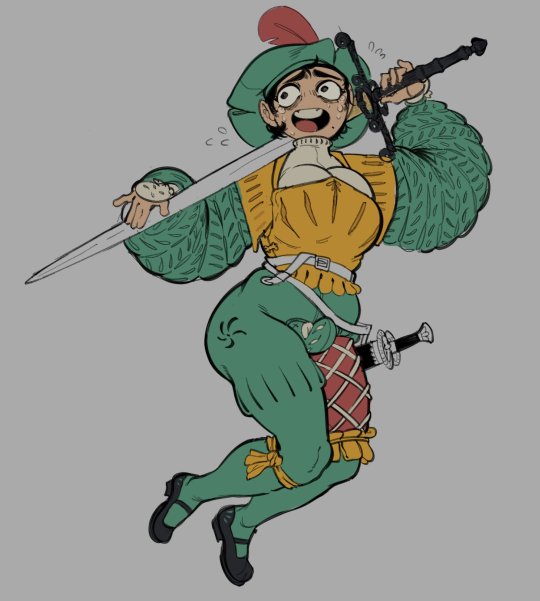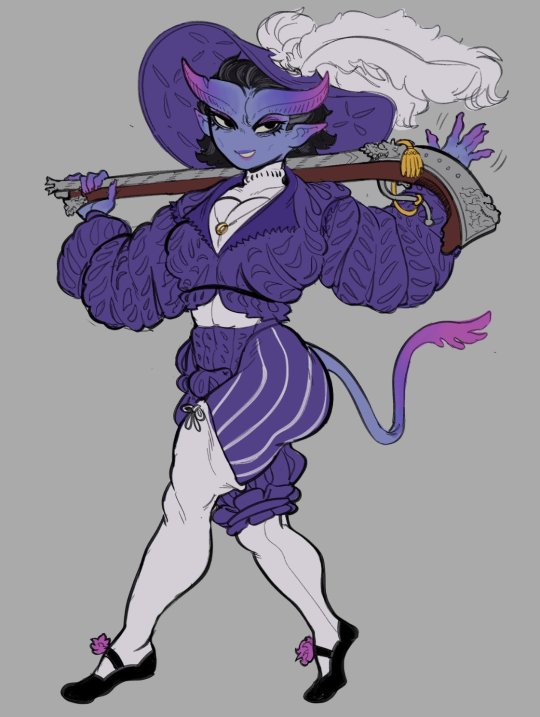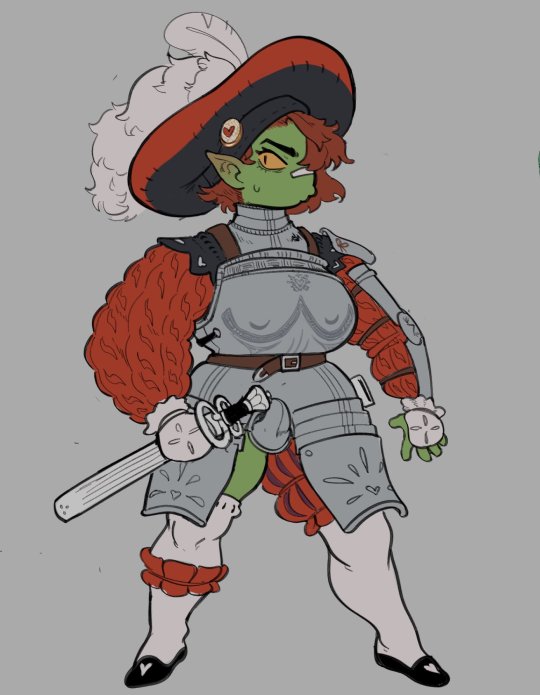Blog for Wolvesreign and the Realms of Rhaetiadan ttrpg setting. Part of the Deep Lore Coop writers group. Follow @agentgrange for this blog's GUMSHOE / Delta Green counterpart.
Don't wanna be here? Send us removal request.
Text

A post-medieval scale tang knife handle with inscription 'make you bleed' from the 17th - 18th century
9K notes
·
View notes
Text


Armenian medical manuscript on Horse Healing 13th century
2K notes
·
View notes
Text
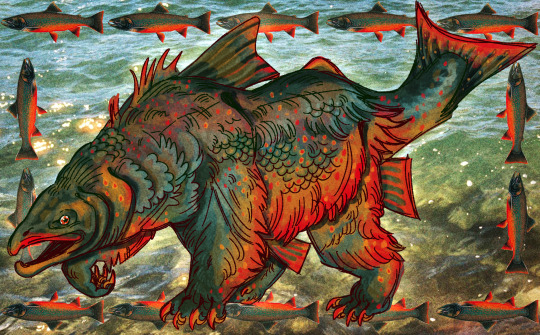
dolly varden bear fish
𓆝 𓆟 𓆞 𓆟 𓆝
this thang is full of meat!!!! :P
23K notes
·
View notes
Photo

Wolf skeleton dressed as a warrior, found with an atlatl, gold disk, and shell necklace. Found in an offering at the Templo Mayor, Mexico City. Aztec. Late 15th century.
https://twitter.com/friel/status/1199144334911791104/photo/1
10K notes
·
View notes
Text
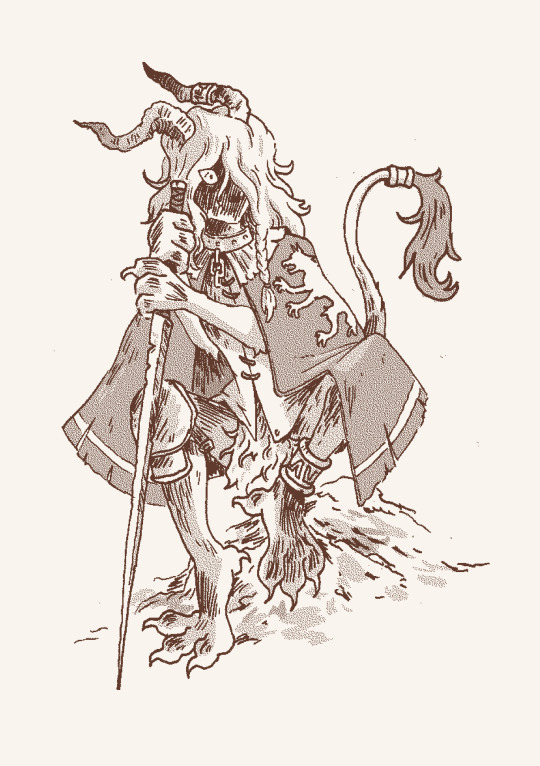
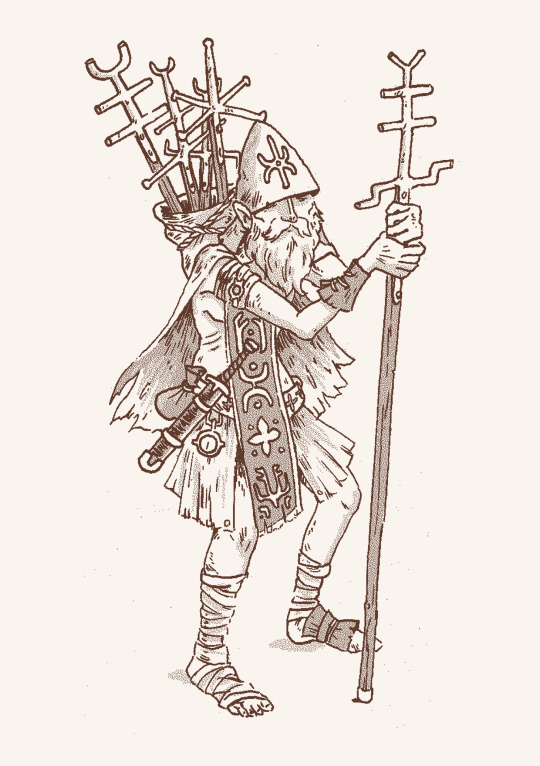

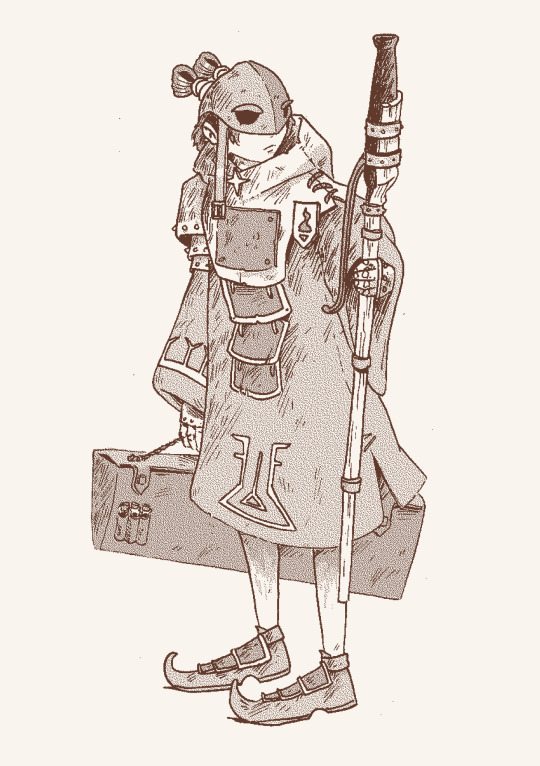
Character designs for a little board game projekt I'm working on.
329 notes
·
View notes
Text

Lou Benesch (French-American, 1989) - The Lover (2020)
7K notes
·
View notes
Text
Port Report: Rasput Yar
Name: Rasput Yar
Population: 16,000
Government: Council Republic & Solitude Dependency (de jure), martial law (de facto)
Governmental Body: Raspur Yar Rada
Head of Government: Chairman Eaghan Bayly (de jure), Vsevolod Viralin (de facto)
Heraldry: Black center-line stripe, fist clenching a pair of reigns
Main exports: Clay
Hot water
Geothermal heat
Fertile soil
Cosmetic Items
Landmarks: Dredger's Chapel (burned)
Mudsledding Fields
Rasput Yar Pit
Viralinist Politburo (burned)
Tworoikan-Gevaur Revolutionary Friendship Memorial (destroyed)
Rasput Yar Hot Springs and Bathhouses
Rasput Yar Military Fortifications (manned)
Located on the southernmost edge of Zolitude, Rasput Yar is a semi-autonomous district of Zolitude slow-walking towards annexation since the Tworoikan Revolution. While it maintains its own city council, it pays its taxes to Zolitude while militarily occupied by a workers militia who claim loyalty to the Tworoikan Council Republics. A ward of contradictions, Rasput Yar is a hotbed for revolutionary sympathizers and religious fundamentalists constantly at odds in a low-intensity civil war that Zolitude is unable or unwilling to step in and permanently resolve. Despite this, the citizens of Zolitude proper consider Rasput Yar a wayward district of the city and their "rightful clay"-- an expression no doubt inspired by Rasput Yar's primary export. Sitting on a bed of soft clay and warm springs, "the Clay Quarter" enables Zolitude's infrastructural development by shipping mass quantities of clay, fresh water, and geothermal energy upland toward the north coast.
Geography:
Rasput Yar connects to Zolitude through the Zouth Zolitude Rail Line, originally part of an interior wetlands canal system before the area was dredged to create the district. The rail line stops just outside the district before passengers must disembark, as the weight of the train system would sink into the wet earth if it progressed any further south. Dug out of a natural embankment between two muddy hillsides, the Rasput Yar ravine was originally settled due to the natural protection it offered from the freezing wind that blasts the northern coast as well as the hot springs that (when isolated from the interior wetlands) provided warmth year-round. The ravine extends southwest descending steadily until reaching the Rasput Yar Pit. Part dam & part mining complex, the pit is a fortified industrial area that acts as a stopping cork keeping the interior wetlands from flooding into the district. Even with the pit absorbing and siphoning out most of the water the citizens of Rasput Yar must work daily to maintain the district's many pumpjack systems that keep the area from flooding or being reclaimed by the surrounding clay.
Mud is a part of life here, either roiling up from the ground or sliding down from the surrounding hills to coat every outdoor surface and piece of machinery that isn't scrubbed daily. Rather than succumbing to despair, the people of the district have developed a sense of good humor about their position and turned it into a type of sport. In the (relatively) warmer months citizens from all over Solitude take the train south to watch and gamble on mud sledding competitions, crowding the hillsides all day then spending their nights in hot spring hotels or in shops purchasing overpriced cosmetic items made with Rasput Yar's own mineral-rich clay. During weddings, it is customary to submerge the bride and her dress into a mount of clay. Officially, this is a symbolic gesture meant to replace bedding ceremonies after they fell out of favor following the revolution. Unofficially, its a damn good time for everyone involved-- except, perhaps, the bride.
Politics:
Rasput Yar has never wanted for political intrigue. The politics of the area can be split broadly into two factions, twisted by decades of conflict and rivalry dating back to the original settlers of Rasput Yar ravine.
The Autodiluvians

"Washed in the blood of Rhiannon."
The Autodiluvians are the lasting legacy of the Mæx pilgrims who settled the area, hoping to retrace Empress Rhaetia's footsteps from her eastern conquest. Originally a part of the Friends of Rhiannon cult (aka "The Dredgers"), the Mæx pilgrims ingratiated themselves with the Tworoikan nobility of Zolitude by using their engineering skills to dredge the southern wetlands that previously choked the city's hinterlands. The Dredgers constructed the Rasput Yar Pit, draining the area to found the district. The Dredgers were offered nominal autonomy and the ability to form their own civil council modeled after the church called the Rada. In exchange, they would cede the ability to collect taxes to Zolitude and parcel off resource rights to influential city burghers. Following the Dual Revolutions and the start of the Wolvesreign Era, the pious and pacifist Dredgers were put into conflict with the revolutionary, atheistic Tworoikan working class who manned the burghers industrial facilities. Years of conflict soured their disposition and hardened the Dredgers until a fundamentalist schism took hold of the faithful, now calling themselves the Autodiluvians. Named for their intense baptism rituals that nearly drown their parishioners, they believe their previous hospitality to be a mistake that allowed the seeds of evil to sow in their community. Underground for decades, they now organize in public to push revolutionary sympathizers from mechanisms of power while scheming in secret to drive them from the city. Autodiluvians believe that one day Rhaetia will send a mighty flood that will wash away the filth from Zolitude-- a prophecy they very nearly brought to fruition in years past.
The Autodiluvians are lead by the charismatic Eaghan Bayly, who they consider a prophet. Relatively new to the politics of Rasput Yar, he rose to prominence after emerging unharmed from the Rasput Yar Pit following the Blackwater Incident.
The Viralinists

"Tworoika for Tworoikans, Workers for the Union!"
Founded by Vsevolod Viralin, the Viralinists are the Rasput Yar workers militia active in southern Zolitude. While on their face they're aligned with the revolutionary cause, the Viralinists are less of an ideological vanguard and more of a nativist gang of thugs working to undermine any left wing opposition. For decades, the Viralinists have toed the line between genuine revolutionary action and covertly collaborating with the city burghers to increase their position at the expense of other workers militias. For all their faults the Viralinists were a useful tool keeping the full force of the Revolution from striking the city of Zolitude. By soaking up popular revolutionary sentiment and placing a buffer of not-quite-red, soft-pink militia controlled territory between Zolitude and the Tworoikan Council Republics the city was spared the worst of the war's depravities. When the war came, it came by sea rather than a flood of bodies and rain of artillery from the south. Balancing outward displays of sympathy for the revolution and the Viralinist leadership's private ambitions hasn't always been easy, especially when their political base is strongest among the hardline Tworoikans who work the clay pits and geothermal plants of Rasput Yar. Frequent conflict with the Mæx Autodiluvians has only radicalized both organizations' line members, culminating in the disastrous Blackwater Incident.
Widely publicized across Tworoika, the Blackwater Incident was enough to prompt the Tworoikan Council Republics to send a military attache to reinforce the Viralinists in their power struggle against the increasingly dangerous Autodiluvians. An attache, they were politely informed, that only a madman, revisionist, or enemy of the people would refuse. With volunteers from the Council Republics the Viralinists were able to successfully take command of Rasput Yar, placing it under martial law until those responsible for the Blackwater Incident are brought to justice and the Autodiluvians are pacified. The nobles of Zolitude, for their part, see this provocation for what it is-- a blatant attempt to draw them in to a conflict with the Tworoikan Red Army and justify a much wider offensive against the city. So far, they've refused to take the bait.
Summary of Historical Events:
598RE -- Rasput Yar Founded by Mæx Pilgrims from the Friends of Rhiannon Cult
599RE -- Dredgers Chapel Constructed
600RE -- Dredgers Establish the Rada Legislative Council Modeled of the Church
606RE -- Completion of the Rasput Yar Pit
608RE -- First Official Mud Sledding Competition Held
609RE -- Industrialized Clay Harvesting Starts, Leading to Influx of Tworoikan Workers
2WR -- Tworoikan Revolution Starts, Viralinist Faction Takes Control of the Zolitude Workers Council with Aid of City Burghers
8WR -- Attempted Invasion of Zolitude Ends in a Stalemate, Ceasefire Negotiated by the Viralinists
8WR -- War Memorial Erected to Honor Cooperation of Tworoikan and Gevaur Troops During the Revolution Leads to Civil Unrest
8WR -- Conflict Between Viralinists and Dredgers Leads to the Autodiluvian Schism
14WR -- Tworoikan-Gevaur split causes Viralinists to Split Between Left and Right Factions
14WR -- Autodiluvian Radical Assassinates Left-Viralinist Leader Yehor Kotenko
14WR -- War Monument Destroyed by Autodiluvian Mob
15WR -- Zolitude Imposes Rare Ordinance on Rasput Yar on Proper Disposal of Bodies After Mudslide Exposes City Graveyard
15WR -- Heavy Rains and Destruction of Farmland Leads to Massive Food Scarcity, Blamed on Left-Viralinist Collectivization Efforts
15WR -- Tworoikan Red Army Unilaterally Occupy Rasput Yar Citing Humanitarian Crisis, Disbanding the Rada
15WR -- Autodiluvians Harrass Red Army Troops and Sabotage Supplies
15WR -- Red Army and Viralinist Mob Burn Down the Dredger Chapel
15WR -- Rasput Yar Floods, Blame Traded Between Autodiluvian Sabotage and Tworoikan Mismanagement of Pumpjacks
15WR -- Viralinist Negotiate Red Army Withdrawl from Rasput Yar
16WR -- Viralinists Purge Left Wing Faction, Begin Further Collaboration with Solitude Government
16WR -- Viralinist Politburo Burnt Down, Accusations of Arson Traded Between Autodiluvians, the Tworoikan Red Army and Left-Viralinists
16WR -- Zolitude Burghers Increase Investment in Rebuilding Rasput Yar, Increasing Industralization
22WR -- Autodiluvians Reassert Themselves in Politics, Placing the Rada in Control of Civil Government
22WR -- Zolitude Burghers Recognize Rada Government and Autodiluvians as a Legitimate Political Organization, Redoubling Local Investment
26WR -- Rada Discusses Full Annexation with Solitude Government
26WR -- Viralinists Threaten to Reinvite Tworoikan Red Army Unless They Are Included in Annexation Discussions
26WR -- The Blackwater Incident
26WR -- Eaghan Bayly Recognized as a Prophet by Autodiluvians
26WR -- Tworoikan Red Army Reenters Rasput Yar at the Supposed Invitation of the Viralinists, Places District Under Martial Law
27WR -- Military Fortifications Constructed to Monitor Rasput Yar for Autodiluvian Subversion
30WR -- The Goldbloods Arrive in Zolitude
1 note
·
View note
Photo

Meanwhile Renaissance man’s iron man suit allows him to have basic motor skills again.
2K notes
·
View notes
Text
Gun Powder
This was black powder, a composite of sulphr, saltpetre (potassium nitrate) and fine charcoal rendered granular by a process called corning. It came in different degrees of fineness (the coarser was used for the guns while the small armes used the fine, which was also used for priming), and on board ship was made up by crewmen into charges for the guns, which were cartridges of cloth or paper of varying sizes, depending upon the power of charge; a full charge for a 32-pdr. contained 11 pounds of powder, a reduced charge 6 pounds, and a saluting charge 6 pounds.

The Grand Magazine is lined with copper, lead and plaster, designed to keep the powder dry, prevent sparks and keep out rats, which could have spread gunpowder throughout the ship. - Grand Magazine of HMS Victory
Black powder- self evidently- although a relatively stable compound, is highly combustible, and is easily detonated by a mere spark. On board a warship, therefore, it was stored in a magazine set deep in the vessel and well away from any source of fire or sparks; it also had to be protected from water, since damp powder would not ignite. Magazines were specially constructed, and were adjacent to the filling room, where cartridges were made up. No iron implements were permitted anywhere near the powder, which was stored loose in wooden barrels bound with copper or wooden hoops, rather than the more usual iron ones. Also adjacent was a light room, an entirely seperate compartment in which were set lanterns to light the magazine and filling room through glass paned windows, since in those days lanterns and candles were the only pratical source of artificial light. In almost every case, fire in a ship’s magazine would result in the destruction of the vessel.

Gunpowder Cartridges in the filling room on HMS Victory
When fired, black powder gave off a dense cloud of white smoke which, in relatively windless conditions, could hang over an engagement and add further to the confusion of battle, the so-called fog of war. In action, the gunners faces could become black with smoke and unburned powder residue, while the fumes made them extremely thirsty and often induced headaches, which were in turn exacerbated by the report of the gun firing and the general din of battle; they also oftnen suffered powder burns, caused when burning powder grains from the discharge landed on the skin of their faces, hands and arms. Black powder continued to be used until well into the last quarter of the 19th century, when it was superseded by the invention and refinement of smokeless powder, which not only made almost no smoke on firing, but whoch was also a considerably more powerful propellant than black powder.
348 notes
·
View notes









